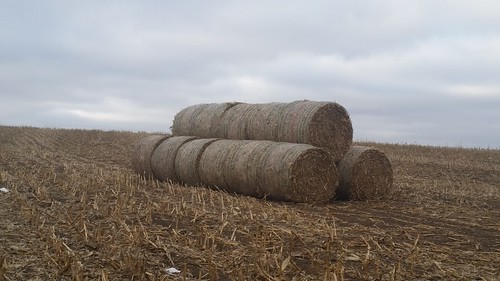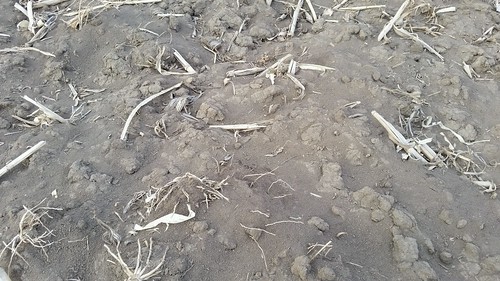
Of the several practices USDA’s Natural Resources Conservation Service recommends to improve soil health and sustainability one of the most important is to keep the soil covered.
In corn and soybean fields, the starting point is maintaining the post-harvest crop residue on the soil surface. Crop residue is plant material remaining after harvesting, including leaves, stalks, and roots.
Crop residues form a protective blanket that benefits the soil by improving the infiltration of water into the soil and slowing the evaporation of water. Evaporation is drastically reduced when the surface of the soil is not absorbing the sun’s rays. Soil surface temperatures under residue-covered soils can be as much as 40 degrees cooler than bare tilled surfaces.
The crop residue cover also protects the soil from wind and water erosion. Residue on the soil deflects the energy of raindrops and irrigation droplets that act like little bombs, blowing the soil particles apart and allowing the organic matter and nutrients to float away.
No-till farming is a great way to preserve crop residue. Avoiding tillage that would destroy residue preserves existing root channels and earthworm burrows that help water move throughout the soil. In addition, standing crop residue such as corn stalks and wheat stubble catch snow. This can yield up to two inches of soil moisture during the winter.
Producers that have implemented continuous, long-term no-till systems can lose nutrients by removing crop residue. Crop nutrients removed by baling and removing corn stalks can be costly to replace. For example, nutrient content in a ton of corn stover are 18 pounds of nitrogen, four pounds of phosphorus, 30 pounds of potassium, and three pounds of sulfur. A typical 200-bushel corn yield produces about five tons of stover. At current prices, that can add up to $24.00 per ton or about $60 an acre if you only removed half the residue.
Residue benefits livestock producers as well. Studies have shown that utilizing cornstalks for winter grazing can result in three to eight or more bushels of grain yield in the following crop. The reason is that the animals are not removing the remaining residue.
Crop residue provides several benefits for many types of agriculture systems. So remember, if you want healthy soil – keep it covered.



